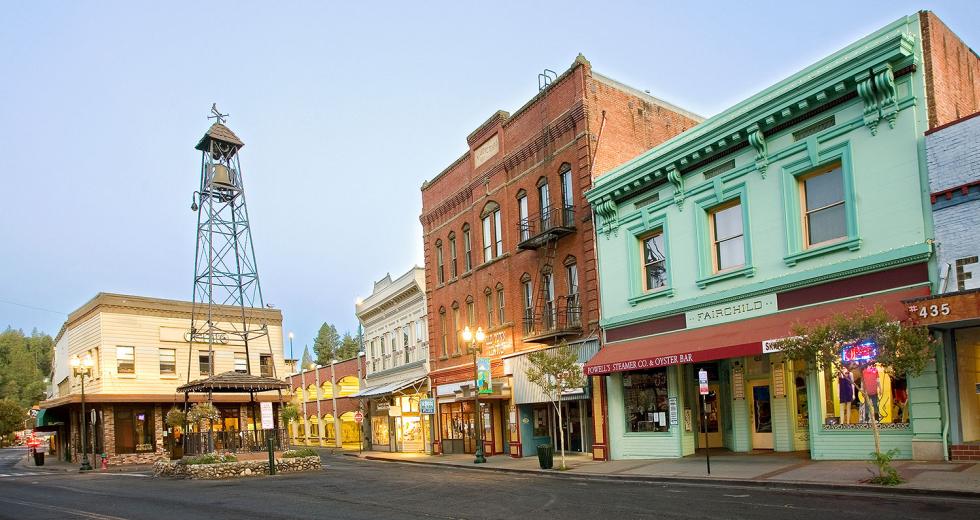According to El Dorado County folklore, Sailor Jack, a young immigrant from Finland, was stumbling about the shrubbery along the South Fork Weber Creek outside of Newtown in 1853. Some veteran miners in town had convinced the inexperienced, hopeful prospector there was a huge fortune in the area. Sailor Jack did not know the miners were playing a joke at the expense of his naivete, but in a twist of fate, he stumbled upon gold and returned with massive nuggets to the old miners’ chagrin. The site became a productive mine early in the gold rush of California. It is just one of the many legendary stories from the gold rush era.
During the gold rush, an estimated $2 billion in gold was extracted, but some prospectors failed to strike it rich. While many miners moved on as the mines dried up, eager to find their fortune elsewhere, others decided to stay, finding they could be successful ranching and farming. It may have been the allure of gold that brought people like Sailor Jack to the West, but it was the promise of the land that made many stay.
Today, the area is known for its agriculture and agritourism, exemplified by the 50-plus family farms in Apple Hill in Camino, founded in 1964. Apple Hill has apple orchards, Christmas tree farms and pumpkin patches that draw more than 1.2 million visitors annually.
Placerville, the hub of commerce during the heyday of the gold rush, still is a mainstay of the “Mother Lode” region and the seat of El Dorado County. Visitors to El Dorado County can take a step back in time when they visit Placerville.
“Our history is No. 1,” says Cleve Morris, city manager for the City of Placerville. “It’s something we’ve been able to cherish and preserve.”
Small businesses like Placerville Hardware are testaments to preservation. Established in 1852, the hardware store claims to be the oldest west of the Mississippi. The family-owned Placerville News Company has been in business since 1856. “We have a great community, a vibrant and historic downtown, and small businesses that thrive because our citizens are so supportive,” says Morris.
Home to more than 40 wineries, the El Dorado County wine industry dates back to the mid-1800s, when it was one of the largest wine producing regions in California. Winemakers flourished into the next century, but when met with poor economic conditions, and later Prohibition, wineries disappeared one by one. Winegrowing wouldn’t reappear in the region until the late 1960s.
In 1973, Boeger Winery became the first post-Prohibition winery to open in El Dorado County. Greg and Sue Boeger bought the land in 1972, and Greg, who grew up in the wine industry — his grandfather, Anton Nichelini, founded Nichelini Winery in Napa — had an affinity for the craft.
“I have always been experimental,” says Boeger. Today, Boeger works with 30 different varietals and does so with his family by his side.
Rancho Murieta
According to local legend, in 1853 a group of California Rangers, the state’s first law enforcement agency, snuck up on a band of outlaws in Gold Country. The state had offered a hefty reward for the capture of the ringleader, the infamous Joaquin Murrieta, who had been stirring up trouble. The Rangers, led by Capt. Harry Love, ambushed the outlaws. A mighty battle ensued, and the Rangers emerged victorious. Murrieta is considered by some residents to be the namesake of Rancho Murieta, a community in the foothills at the gateway to the Sierra Nevada.
Rancho Murieta started as a vast swath of ranchland used for livestock before Sacramento County approved development in the 1960s. In 1983, businessman Fred Anderson bought the facility that would become Murieta Equestrian Center. Today, it has become a centerpiece of the area and attracts as many as 200,000 competitors and spectators for its equestrian shows annually.
The Fossati-Lombardo family founded the estate which is now
Boeger Winery. They had vineyards and a bonded winery in the
1800s. photo courtesy of El Dorado Winery Association

Carol Anderson Ward, daughter of Fred and now CEO of the Murieta Equestrian Center, is a longtime resident of the area and has played an integral role in the community’s development. Anderson Ward, who describes herself as a “ranch kid,” grew up entrenched in the local lore; the ranch her family lived on was established in the mid-1800s as a dairy farm and cheese factory.
Rancho Murieta now spans 3,500 acres and is home to approximately 5,000 residents. There are two gated housing facilities — Rancho Murieta North and Rancho Murieta South — with the Rancho Murieta Country Club between them. But what truly makes Rancho Murieta a special place to live, Anderson Ward says, “is the people. This place is so serene and secure.”
In January 2018, Anderson Ward opened the 83-room Murieta Inn & Spa, giving visitors from the equestrian center, or those visiting the nearby wineries in Amador and El Dorado counties, a place to stay. She also played a key role in the development and opening of the Bel Air market and shopping center in May.
“We need these amenities in order to have a true community and to support our economy’s growing infrastructure,” she says.
Anderson Ward’s next project is an 800-home development in Murieta North. “This new development will provide more housing, but will also preserve our great open space,” she says.



